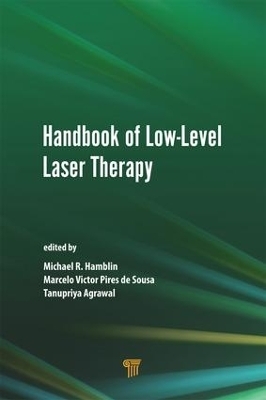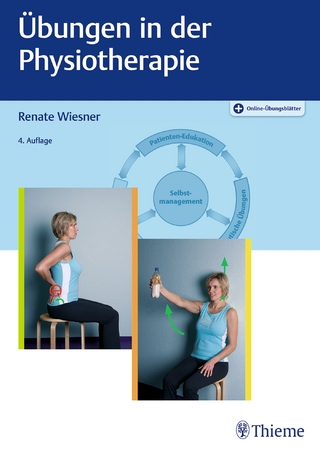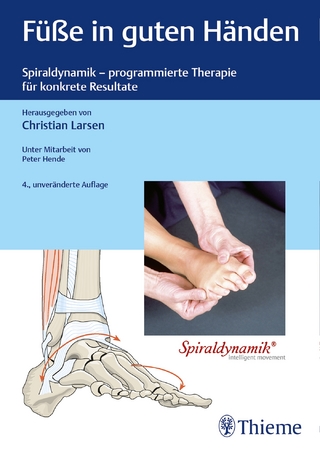
Handbook of Low-Level Laser Therapy
Pan Stanford Publishing Pte Ltd (Verlag)
978-981-4669-60-3 (ISBN)
- Titel z.Zt. nicht lieferbar
- Versandkostenfrei innerhalb Deutschlands
- Auch auf Rechnung
- Verfügbarkeit in der Filiale vor Ort prüfen
- Artikel merken
This book compiles cutting-edge contributions from the world’s leading experts in Photobiomodulation and LLLT. Chapters cover general concepts, mechanisms of action, in vitro studies, pre-clinical animal studies, veterinary applications and a wide range of clinical topics. Edited by Michael Hamblin from Massachusetts General Hospital and Harvard Medical School, aided by two prominent researchers (Marcelo Sousa and Tanupriya Agrawal), this book will appeal to anyone involved in the basic science, translational aspects and clinical applications of LLLT.
Michael R. Hamblin is a principal investigator at the Wellman Center for Photomedicine at Massachusetts General Hospital, Boston, and an associate professor of dermatology at Harvard Medical School and the Harvard-MIT Division of Health Science and Technology. His research interests lie in the areas of photodynamic therapy and low-level light therapy. He has published over 284 peer-reviewed articles and is a fellow of the SPIE. Marcelo Victor Pires de Sousa holds a bachelor’s degree and a PhD in physics. He is founder and chief science officer of Bright Photomedicine and is involved in the development of new products and dissemination of photomedicine. Tanupriya Agrawal obtained her MD in 2006 from Netaji Subhash Chandra Bose Government Medical College, Jabalpur, India, followed by a PhD in biomedical sciences from Creighton University, Omaha, Nebraska. She is a visiting postdoctoral fellow at Dr. Hamblin’s lab at the Wellman Center for Photomedicine, Massachusetts General Hospital. She is also an trainee pathology resident at Tufts Medical Center, Boston. Dr. Agrawal has published 11 peer-reviewed articles and 12 conference proceedings, including one oral presentation.
What is Low-Level Laser (Light) Therapy?. History of Low-Level Laser (Light) Therapy. Lasers, LEDs, and Other Light Sources. Is Coherence Important in Photobiomodulation?. Tissue Optics. Light–Tissue Interaction and Light Dosimetry. Mitochondrial Light Absorption and Its Effect on ATP Production. Water as a Photoacceptor, Energy Transducer, and Rechargeable Electrolytic Bio-battery in Photobiomodulation. Role of Reactive Oxygen Species in Low-Level Laser Therapy. Molecular Basis for Photobiomodulation: Light-Induced Nitric Oxide Synthesis by Cytochrome c Oxidase in Low-Level Laser Therapy. Cytoprotective Effect of Low-Level Light Therapy using LEDs on Neurons. Low-Level Laser and Cultured Neural Tissue. Shining a Light on Parkinson’s Disease. Low-Level Laser Therapy and Stem Cells. Antimicrobial Photodynamic Therapy. Low-Level Laser (Light) Therapy forWound Healing in Animal Models. Low-Level Laser Therapy for Arthritis in Animal Models: Beneficial Effect and Action Mechanism. Low-Level Laser Therapy for Lung Diseases: From the Bench to the Bed. Low-Level Laser (Light) Therapy in Tendon Healing in in Vitro and in Vivo Models. Bone Repair in Animal Models. Transcranial Low-Level Laser (Light) Therapy for Stroke and Traumatic Brain Injury in Animal Models. Phototherapy in Peripheral Nerve Repair and Muscle Preservation. Low-Level Laser Therapy for Spinal Cord Repair. Low-Level Laser (Light) Therapy for the Treatment of Visual System Injury and Disease. Protection from Cardiac Ischemia and Reperfusion Injury. Low-Level Laser and Experimental Aortic Aneurysm: Mechanisms and Therapeutic Implications. Low-Level Laser Therapy: A Treatment Modality for Multiple Sclerosis Targeting Autoimmunity and Oxidative Stress. Low-Level Laser Therapy as an Alternative Treatment for Snake Envenomation. Veterinary Low-Level Laser (Light) Therapy Applications for Companion Animals. Emergence of Low-Level Laser (Light) Therapy in Clinical Veterinary Practice. Photomedicine for Exotic Animals: A Case-Based Discussion. Recalcitrant Wound: Using Low-Level Laser (Light) Therapy to Manage Non-Healing Wounds and Ulcers. Clinical Applications with Low-Level Laser Therapy in Arthritis. Use of Low-Level Laser Therapy and Light-Emitting Diode Therapy to Improve Muscle Performance and Prevent Damage: From Animal Models to Clinical Trials. Low-Level Laser Therapy of Pain: Clinical Applications. Low-Level Laser Therapy and Its Application in Tinnitus. Laser Therapy for the Treatment of Radiculopathy. Difficult Path to Treating Acute Ischemic Stroke Patients with Transcranial Near-Infrared Laser Therapy. Low-Level Laser (Light) Therapy for Rehabilitation in Traumatic Brain Injury and Stroke, including Chronic Aphasia. Transcranial Near-Infrared Light for Major Depressive Disorder: Targeting the Brain Metabolism. Low-Level Laser Therapy: A Corner Stone in the Management of Cancer Therapy–Induced Mucositis. Photobiomodulation in Dentistry: Manipulating Biostimulation and Bioinhibition for Clinical Success. Photobiomodulation for the Clinical Treatment of Age-Related Macular Degeneration. Laser (Light) Therapy for Postherpetic Neuralgia. Laser Acupuncture. Intravascular Laser Irradiation of Blood. Nonsurgical Laser Therapy for Type 1 and Type 2 Diabetes. Laser Therapy of Traumatic Central Nervous System Injuries. Low-Level Laser (Light) Therapy: Aesthetic Applications for Hair. Low-Level Laser (Light) Therapy for Cosmetics and Dermatology. Low-Level Laser Therapy for Body Contouring and Fat Reduction. Transcranial Low-Level Laser (Light) Therapy for Neurocognitive Enhancement. Post-Operative Uses of Low-Level Laser Therapy. Bright New World: Future Directions of Low-Level Laser (Light) Therapy.
| Erscheinungsdatum | 10.10.2017 |
|---|---|
| Zusatzinfo | 51 Illustrations, color; 188 Illustrations, black and white |
| Verlagsort | Singapore |
| Sprache | englisch |
| Maße | 152 x 229 mm |
| Gewicht | 2320 g |
| Themenwelt | Medizin / Pharmazie ► Physiotherapie / Ergotherapie ► Orthopädie |
| Naturwissenschaften ► Physik / Astronomie ► Angewandte Physik | |
| Technik ► Maschinenbau | |
| Technik ► Medizintechnik | |
| ISBN-10 | 981-4669-60-1 / 9814669601 |
| ISBN-13 | 978-981-4669-60-3 / 9789814669603 |
| Zustand | Neuware |
| Informationen gemäß Produktsicherheitsverordnung (GPSR) | |
| Haben Sie eine Frage zum Produkt? |
aus dem Bereich


